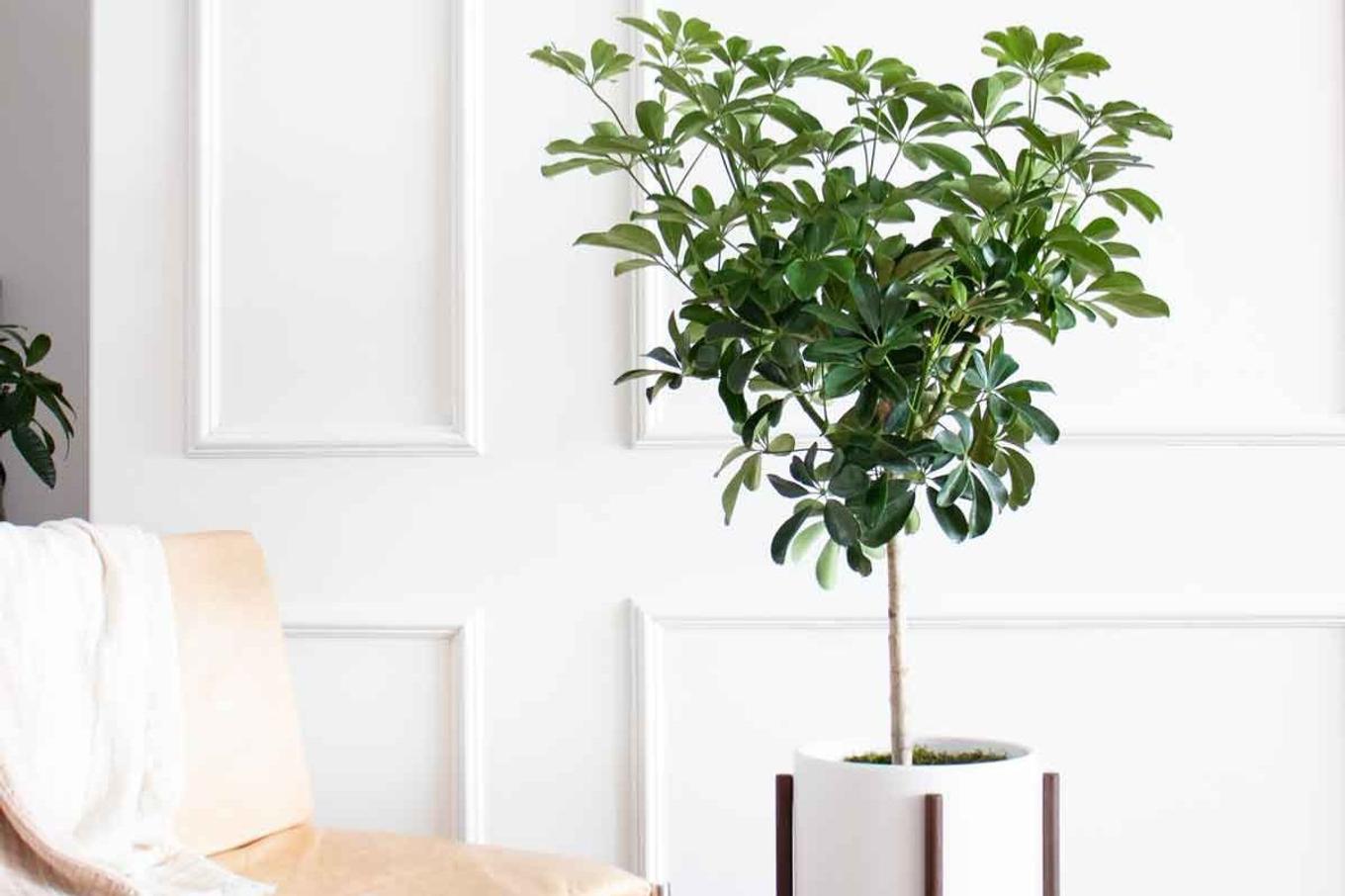Schefflera Care Guide

The Schefflera, commonly known as the Umbrella Tree, is a lively, easy-care houseplant known for its glossy, hand-shaped leaves that radiate like the spokes of an umbrella. Native to tropical climates, this plant brings height, fullness, and a bold green presence to any room. It’s perfect for beginners and experienced plant parents alike—fast-growing, forgiving, and adaptable, with just the right amount of flair.
Simple Care Instructions for the Schefflera
Light Requirements
Schefflera plants do best in bright, indirect light. A few hours of gentle morning or late afternoon sun are ideal, but avoid intense midday rays, which can scorch the leaves. In lower light, Schefflera can survive but may grow leggy or drop leaves. For best shape and growth, place near an east- or west-facing window with filtered light.
Watering Needs
Water thoroughly when the top 2–3 inches of soil feel dry. Let the water drain completely—Scheffleras hate sitting in soggy soil, which can lead to root rot. In spring and summer, this usually means watering once a week. In cooler months, reduce to every 10–14 days or when the soil is dry deeper down.
Schefflera prefers consistency: too much water and not enough light are the quickest ways to stress it out.
Humidity and Temperature
This tropical plant enjoys moderate to high humidity, but it’s fairly tolerant of average indoor levels. If your air is dry—especially in winter—consider misting occasionally or placing a humidity tray nearby to keep it looking its best.
Schefflera prefers temperatures between 65–85°F (18–29°C). Avoid drafts, heaters, or cold windows—temps below 55°F (13°C) can cause leaf drop and stunt growth.
Soil and Repotting
Use a well-draining potting mix. Repot every 2–3 years, or when roots become too tightly packed. Scheffleras grow quickly and appreciate fresh soil and space to stretch out.
To keep yours bushy rather than leggy, pinch or trim the tips regularly.
Common Problems and Troubleshooting Tips
Yellow Leaves – Overwatering or Poor Drainage
Symptoms: Lower leaves turn yellow and drop.
Cause: Too much water or poor drainage.
Solution: Let soil dry out more between waterings. Check drainage holes and consider switching to a faster-draining potting mix.
Leaf Drop – Light Change, Drafts, or Water Stress
Symptoms: Leaves fall off suddenly or gradually.
Cause: Drafts, relocation, underwatering, or overwatering.
Solution: Check for consistent watering habits, avoid moving the plant too frequently, and keep it away from cold or hot air blasts.
Leggy Growth – Not Enough Light
Symptoms: Long, spindly stems with fewer leaves.
Cause: Low light.
Solution: Move to a brighter spot with indirect sun. Trim back stems to encourage fuller growth.
Brown Leaf Tips – Dry Air or Inconsistent Watering
Symptoms: Leaf tips and edges turn brown and crispy.
Cause: Low humidity or underwatering.
Solution: Increase humidity with misting or a pebble tray. Water when the top few inches are dry, but avoid extremes.
Sticky Leaves or Webbing – Pests
Symptoms: Sticky residue, tiny webs, or spotted leaves.
Cause: Spider mites or scale insects.
Solution: Wipe leaves with a damp cloth. Treat with insecticidal soap or neem oil weekly until pests are gone. Increase humidity to deter mites.

Brown spotting on leaves could be a sign of low humidity/underwatering.

Most likely underwatering. Yellow/brown leaves should always be removed.
Seasonal Care Tips
In spring and summer, Schefflera grows fast—this is the time to prune, repot, and fertilize. Feed monthly with a balanced liquid fertilizer to support lush new growth. You can also train it into a tree shape or encourage a fuller bush by strategic trimming.
In fall and winter, growth may slow. Cut back on watering and pause feeding. Keep your plant in a warm, draft-free spot with good light, and it’ll ride out the season with ease.








